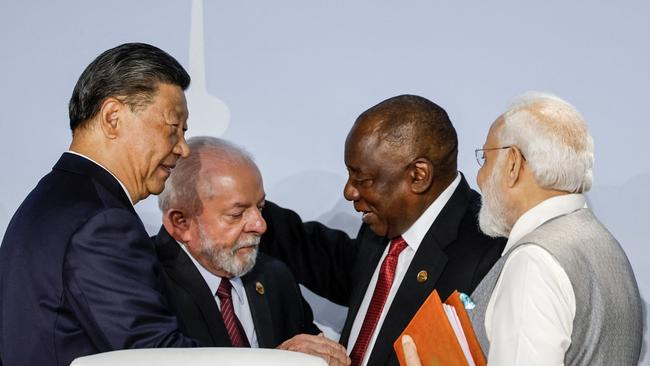China map goads regional leaders ahead of summit week
Beijing’s dismissive response — urging all parties not to over-react — was yet another blow to ASEAN’s diminishing prestige.

China has thrown down the gauntlet to outraged neighbours by releasing a new map reasserting its disputed claims to the South China Sea, northeast India and even a Russian island it had previously agreed to share on the eve of regional leaders meetings in Jakarta and New Delhi.
The new “standard map” has drawn progressive protests since its Monday release, starting with India – which dismissed its claims over Aksai Chin and Arunachal Pradesh as “absurd” – then Malaysia, Taiwan, The Philippines, Indonesia and Vietnam who have all released separate statements since.
Vietnam “absolutely rejected” China’s claims over the disputed Spratly and Paracel island chains, while Malaysia and The Philippines also protested the map’s “unilateral claims” over parts of their sovereign territory.
Even Indonesia, which insists it is not a claimant to the maritime dispute despite China claiming part of its southern exclusive economic zone, said the map did not adhere to international laws.
But Beijing’s dismissive response on Thursday, urging all parties not to over-react to a “routine exercise, was seen as another blow to ASEAN’s diminishing prestige after US President Joe Biden opted to skip next week’s East Asia Summit in preference for the G20 and a bilateral visit to Hanoi.
“We hope parties concerned can view it in an objective and rational light,” foreign ministry official Wang Wengbin said coolly of the latest edition that also claims Taiwan island.
China’s hubristic timing – within days of President Xi Jinping and India’s Narendra Modi agreeing on the sidelines of the BRICS summit to de-escalate border tensions and ahead of the ASEAN and G20 summits – has led many to conclude it was designed to stir the pot. Singapore-based security analyst Collin Koh said the map not only signalled to those attending the meetings that Beijing’s territorial claims were a “non-negotiable issue”, but also reflected China’s confidence that ASEAN was incapable of mounting a united front on the issue.
ASEAN has repeatedly failed to stand up for member states singled out for bullying, as The Philippines has been in recent weeks and months.
Last month, Chinese coastguard vessels turned water cannons on a Philippines resupply ship in its own exclusive economic zone in defence of its disputed claims. Australia, US and Japan all condemned China’s actions at the Second Thomas Shoal, while ASEAN maintained a stony silence.
“China is counting on ASEAN to give a muted response. If I was China I would be very comfortable that the most ASEAN is capable of is a joint declaration with a very generic mention of the South China Sea,” Dr Koh said.
“Obviously there are domestic imperatives, given China’s economic problems. They know they’re going to get backlash from the region but the domestic imperative of asserting their interests outweigh that.”
China also appeared to be counting on G20 host India sticking to its resolve that next week’s meeting focus on common challenges, such as food security, and not stray into thorny geopolitical issues.
Euan Graham, a senior security analyst with the Australian Strategic Policy Institute, said while China’s map carried no legal weight, the timing of its release was evidence of China’s “willingness to offend all countries in unison”. “It’s the Xi Jinping way of doing things. The perversity is it is unifying all of China’s neighbours, when China has historically been pretty good at playing divide and rule,” Dr Graham said.
Nine out of 10 ASEAN leaders (excluding Myanmar) will attend next week’s Jakarta summit, alongside Anthony Albanese, the prime ministers of Japan, India, China and Canada, US Vice-President Kamala Harris and South Korean President Yoon Suk-yeol.
The three days of meetings, which culminate in Thursday’s East Asia Summit, would be a critical test for Indonesia, which had been a “lacklustre ASEAN chairman”, hamstrung by its need for Chinese investment in its new capital city project, Dr Graham said.
“If (Jakarta) doesn’t raise the maritime bullying of other ASEAN member states then that’s a fail. The whole point of ASEAN is to avoid being picked off individually but that seems to be what Indonesia has settled for. China has ASEAN where they want it: dependant on their trade and resigned to trying to make the best of a bad situation because economically China is the future.”
Only a continued decline in China’s economic fortunes – and not any appeal to maintain a rules-based order – would change regional attitudes.




To join the conversation, please log in. Don't have an account? Register
Join the conversation, you are commenting as Logout